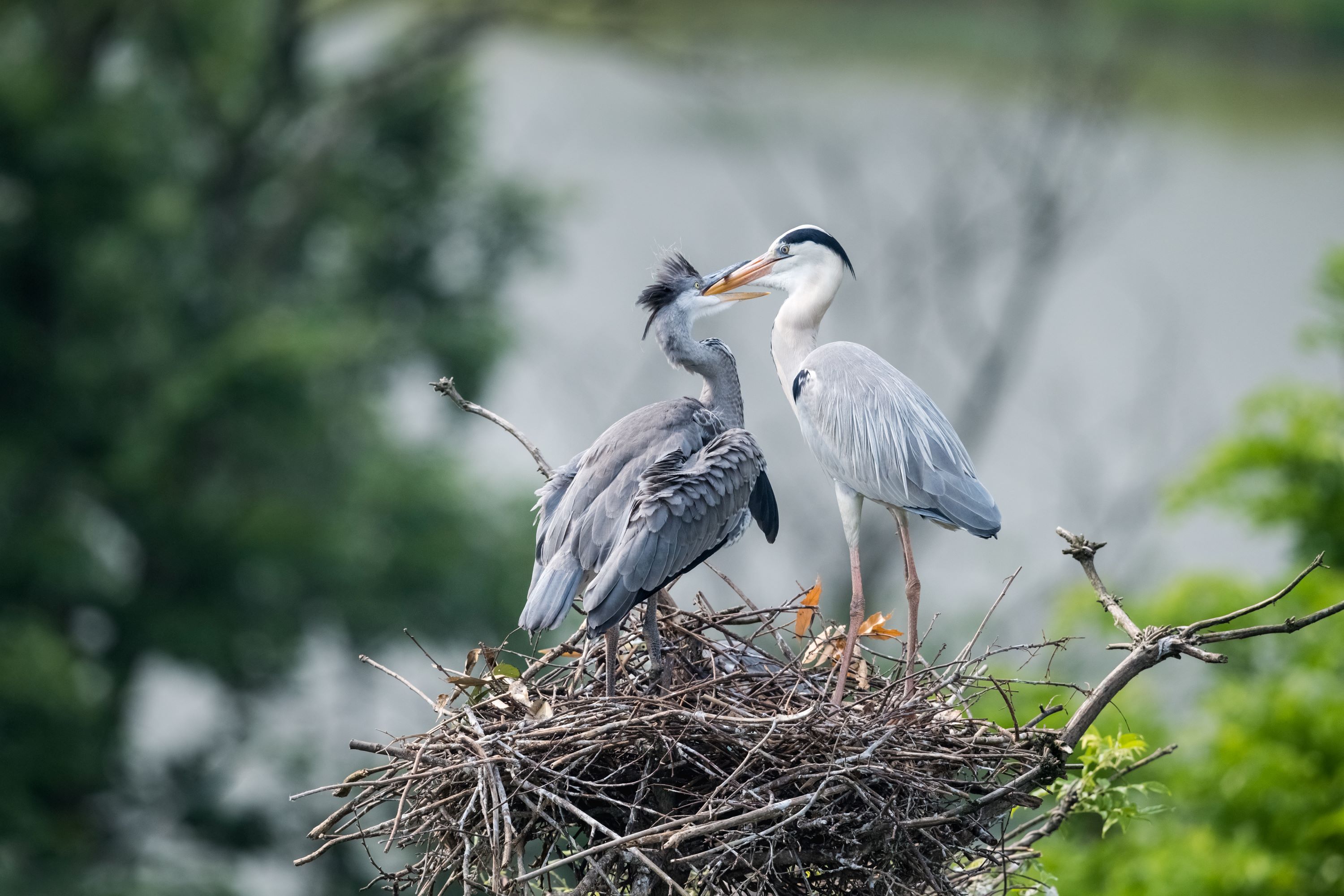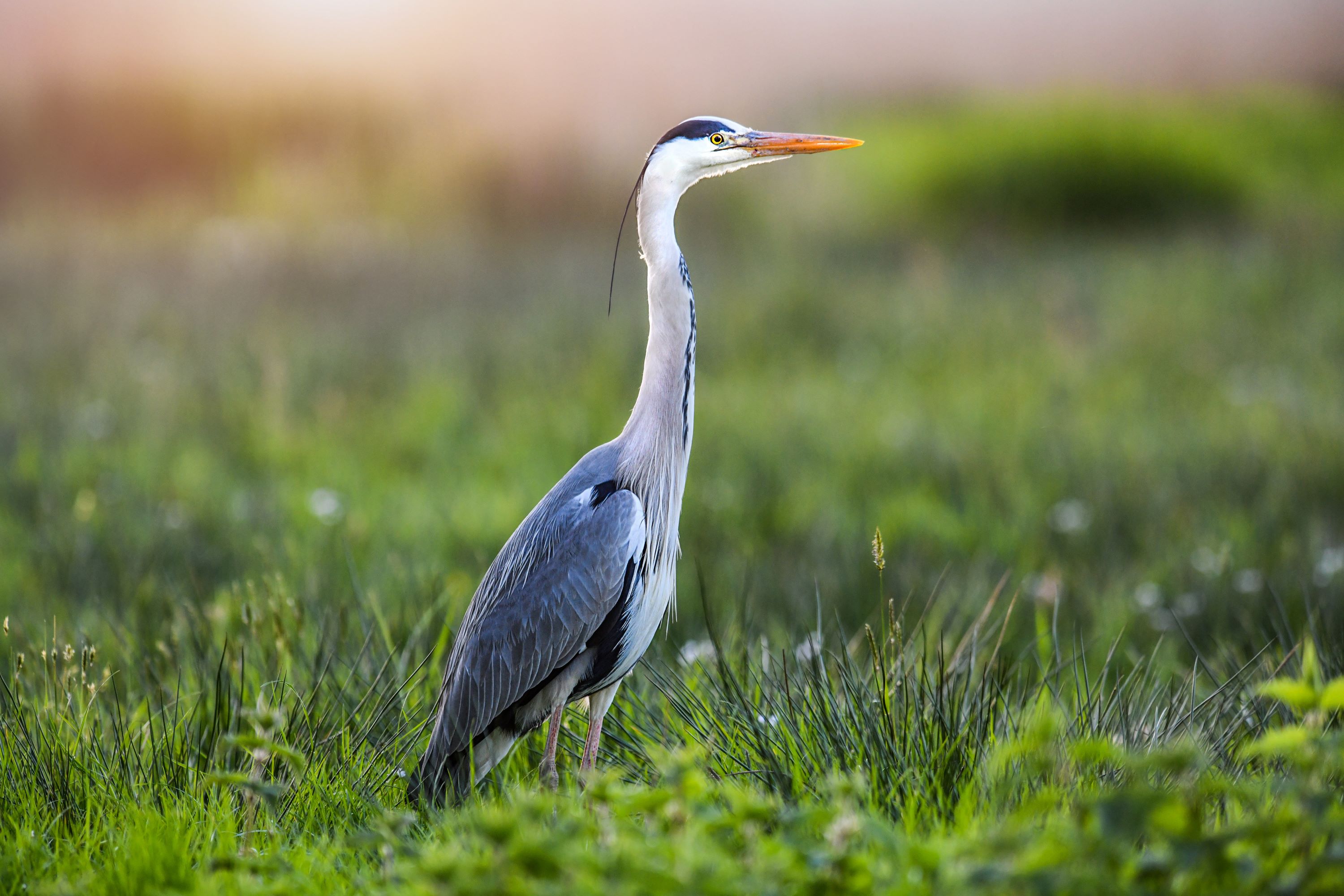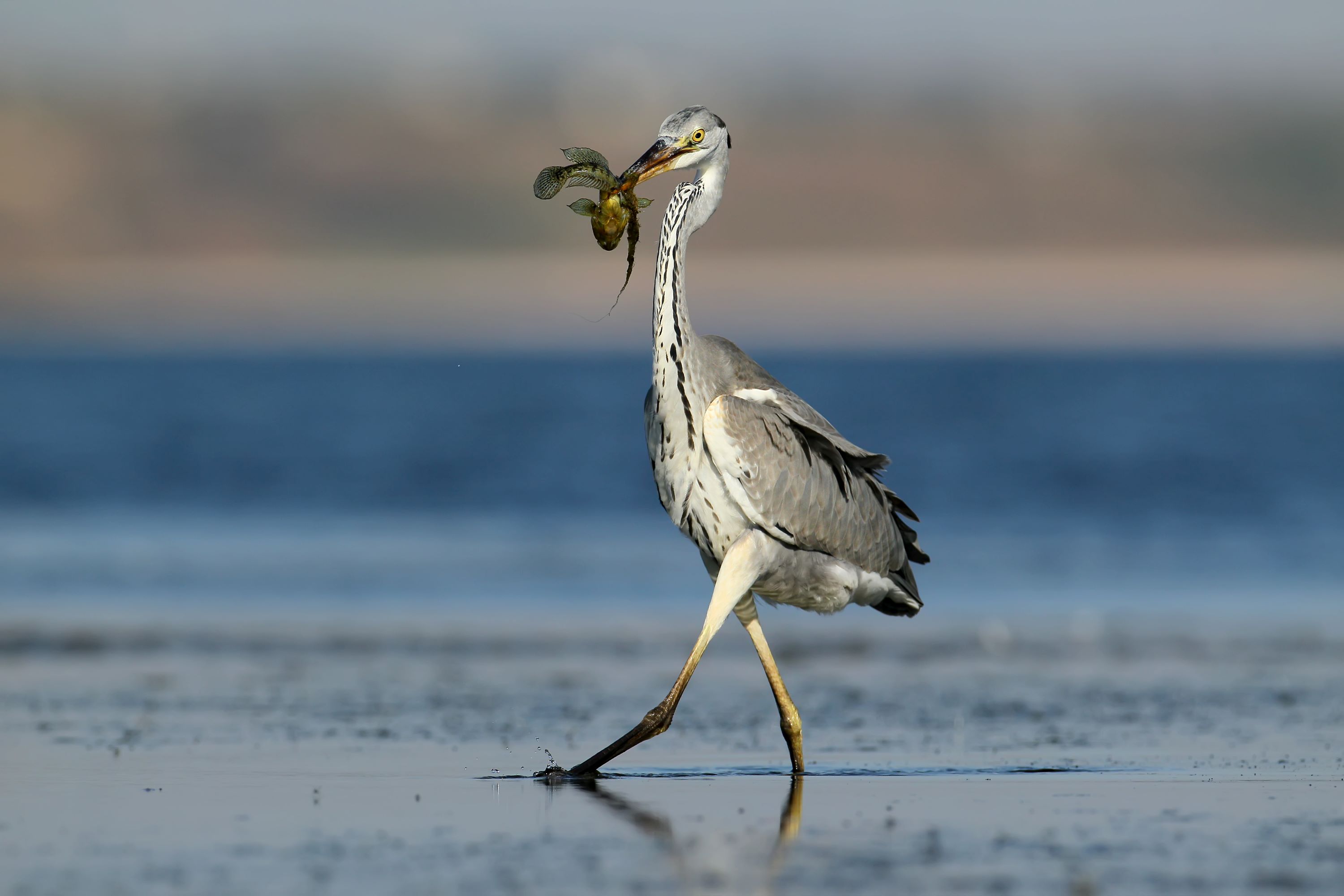
Grey Heron: The Iconic Fisher of the Waterways
Introduction to the Grey Heron
The Grey Heron, Ardea cinerea, is a familiar and majestic sight along the waterways of Europe, Asia, and parts of Africa. Known for its impressive stature and distinct plumage, this bird has become synonymous with wetland and riverside habitats.
Physical Description
Standing up to a meter tall, with a wingspan reaching nearly two meters, the Grey Heron is an imposing figure. It showcases a striking plumage of slate grey, white, and black, with a notable black stripe extending from its eye to the back of its neck. The bird's long legs and neck aid in its hunting prowess, and its sharp, pointed bill is adept at catching a variety of prey.
Habitat and Distribution
Grey Herons are adaptable birds, inhabiting a wide range of wetland areas including lakes, rivers, ponds, marshes, and coastal environments. They are commonly found throughout temperate Europe and Asia and as far south as Africa.

Behavior and Lifestyle
Known for their solitary hunting habits, Grey Herons can often be seen standing still or wading slowly in shallow water. They are primarily crepuscular, being most active during dawn and dusk, but can also be observed hunting at any time of day.
Feeding Habits
Their diet is varied, consisting mainly of fish, but also includes amphibians, small mammals, insects, and occasionally birds. They hunt by standing motionless in the water, waiting to strike swiftly at unsuspecting prey with their powerful bills.
Breeding and Nesting Habits
Grey Herons breed in colonies known as heronries, which can be located in trees, reeds, or on cliffs, usually near water. These colonies can host a large number of nests, sometimes in the hundreds.

Egg Laying and Incubation
The female typically lays three to five pale blue eggs. Both parents share the responsibility of incubating the eggs, which hatch after about 25 to 30 days. The elevated nesting sites provide protection from many ground predators.
Chick Rearing and Parental Care
Chicks are altricial and dependent on their parents for food. Both parents feed the chicks by regurgitation. The young herons fledge after about seven to eight weeks but may remain dependent on their parents for a short period thereafter.
Vocalizations and Communication
Grey Herons are not particularly vocal, but they do emit a range of sounds, especially in the breeding colony. Their calls include harsh croaking sounds used for communication between mates and in territorial defense.
Conservation Status
The Grey Heron is listed as Least Concern by the IUCN. While they are widespread and common in many parts of their range, they face threats from habitat destruction and pollution. Conservation efforts focus on preserving wetland habitats and ensuring water quality.
Similar Species and Taxonomy
Part of the order Pelecaniformes, the Grey Heron is often compared to the Great Blue Heron in North America due to their similar size and appearance. However, it is distinguishable by its grey coloration and habitat preferences.
The Grey Heron in Utah
The Grey Heron is not native to Utah or North America; it is primarily found across Europe, Asia, and Africa. In Utah, birdwatchers can observe the Great Blue Heron, a similar species, along waterways and in wetlands.
Conclusion
The Grey Heron, Ardea cinerea, is a symbol of the health and vitality of wetland ecosystems. Its presence across diverse habitats highlights the importance of these areas for supporting a rich array of wildlife. As an iconic species, the Grey Heron serves as an ambassador for the conservation of wetlands and aquatic environments worldwide.